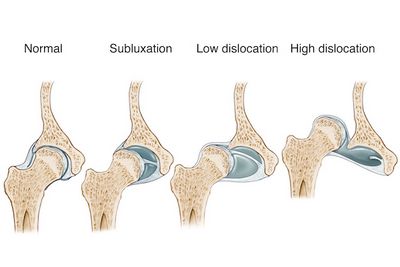Cervical dysplasia, also called cervical intrapitular neoplasia or cervical pre-mature cancer, is a growth on the surface of your cervix, a soft tissue that keeps the vaginal opening open and allows for the passage of urine.

The cervix acts like a spongy piece of tissue that expands and contracts to ensure that the vaginal opening remains open at all times. The cervix, however, can become damaged or abnormal during pregnancy, and in most cases there is not enough blood flow to help the tissue to contract properly.
This causes the tissue to push against the vaginal walls, creating a bump or swell at the top of the vaginal opening. A lump on one side of this bump, called cervical intraepithelial neoplasia (CIN), may be accompanied by pain or discomfort, and sometimes a thin line separating it from the vaginal wall. Other conditions that may occur include cervical spondylosis, or an abnormality in the shape of your spinal cord, and tumors and cysts within the cervix itself. There are other conditions that can lead to dysplasia as well, including multiple births, genetic abnormalities, and abnormal cell division.
If abnormal cells in your body are present, these cells may continue to multiply, resulting in dysplasia. These abnormal cells can become cancerous if they are left untreated, so it’s important to detect dysplasia as soon as possible.
Once dysplasia has been detected, it’s necessary to take steps to remove the abnormal cells. These cells may have already started to multiply in the first place, and thus there’s no need for removal. However, when a cyst is present, treatment is often more invasive and may involve surgery. You will need to find a specialist, such as a gynecologist, to perform the treatment.
Depending on the type of dysplasia present, treatment options include: laparoscopy, which is used to remove the lump; surgery; chemotherapy, which is used to treat cancerous cells; radiation, which may be administered intravenously or through the skin to kill the abnormal cells; and hormonal therapy, which stimulates the uterine lining to produce more tissue. The doctor you choose to perform your treatment will be able to determine the best option for you.
If you’ve found the abnormal cells to be cancerous (which is rare), your doctor may be able to isolate them with the use of a microscope.

This will help them determine whether or not the cells are cancerous, and they will be sent for further testing.
As a pre-menopausal women, you may have been given birth control pills or even undergone a hysterectomy. These options have had success in reducing the risk of developing dysplasia. However, if you’ve had a hysterectomy, or if you plan on becoming pregnant, you may want to discuss whether your physician might recommend a surgical intervention for preventing dysplasia in future pregnancies.
Surgical intervention may not be an option if you haven’t had your hysterectomy, but your doctor may be able to make the decision for you based on the circumstances. Your doctor may recommend a hysterectomy if you have a lot of tumors that are large and are likely to cause cancer. Otherwise, your doctor may recommend that you undergo surgery, but that the condition does not recur.
Surgery may be the only option if your doctor suspects that you have a more serious condition, such as a tumor or polyp. If you do undergo surgery, the procedure can be effective and may reduce the risk of developing dysplasia. However, the overall treatment can be quite invasive, so it is important that you consult with your doctor before you have any surgery, to determine the best option for your case.
Hysterectomy may be a choice for some women, but there are some cases where this isn’t an option. In these cases, a hysterectomy can be performed as a stand-alone procedure, without removing the entire uterus. This option allows your physician to remove the excess tissue from your uterus and in doing so, you may have a chance of preventing dysplasia.
As you can see, there are many different ways to prevent dysplasia. You should keep in mind that your goal is to live a healthy lifestyle and be happy, which is why you will have to consider your treatment options carefully.